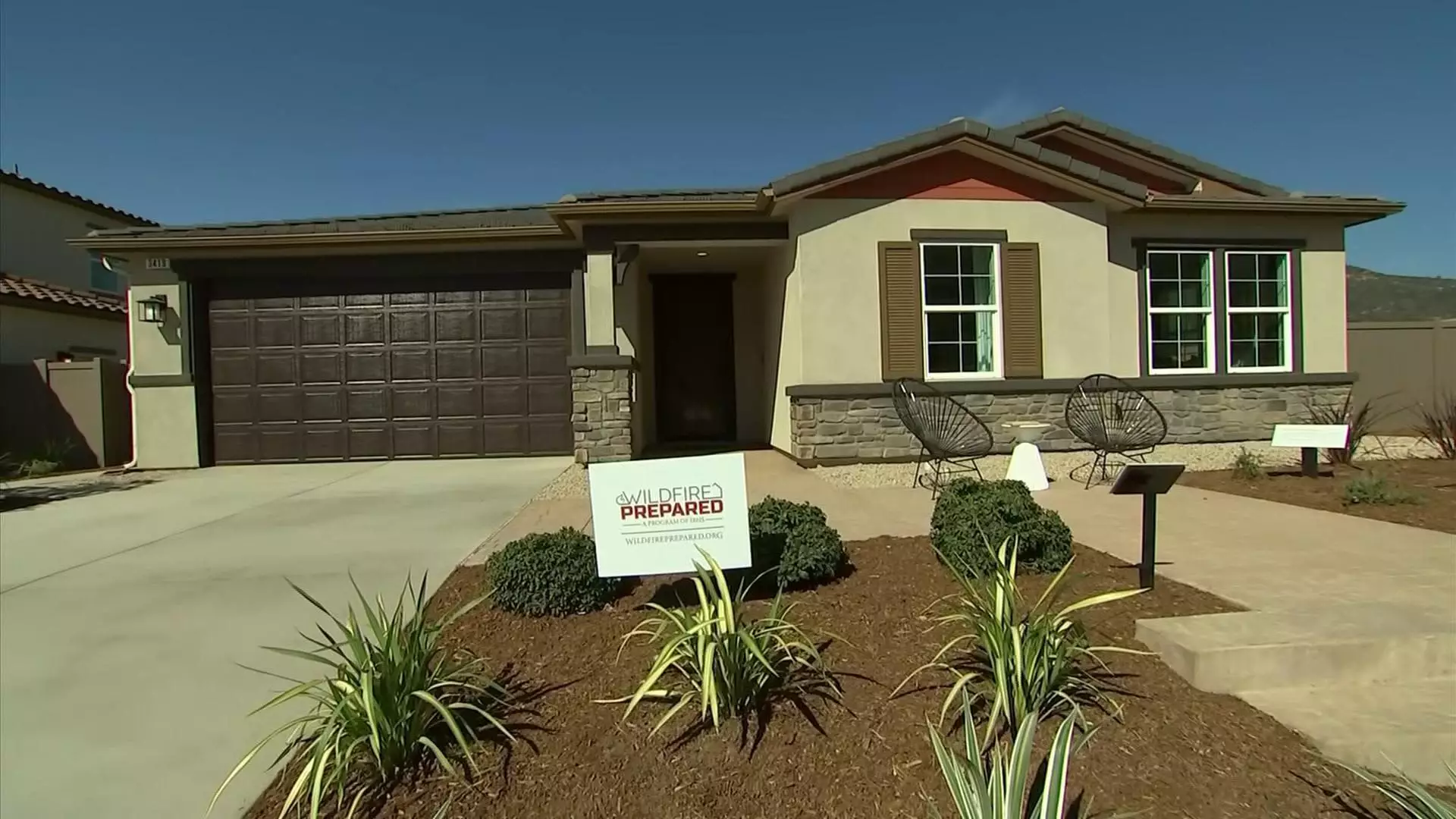California has long faced the devastating consequences of wildfires, with countless homes consumed by flames and entire communities reduced to ashes. Just months after yet another catastrophic season of wildfires devastated Los Angeles, KB Home has stepped into the fray with an ambitious project in Escondido, a community poised to showcase the future of wildfire-resistant living. While we can applaud innovation and necessity in this project, it’s essential to critically examine whether mere adherence to resilience standards can truly alter the course of an impending wildfire disaster.
A Groundbreaking Development
KB Home’s new community, consisting of 64 single-family homes, is endorsed by the Insurance Institute for Business & Home Safety (IBHS). These homes are designed with a keen focus on drought-fueled fire hazards, aiming to mitigate three primary ignition sources: flying embers, flames, and radiant heat. While the project marks a significant advancement in homebuilding practices aimed at safety, one cannot help but wonder if this is a sufficient response to a steadily escalating climate crisis. The arid landscape and brush-laden hills of California are unforgiving, leading one to ask whether the offering of a “wildfire-resilient” home is merely a band-aid on a more extensive problem.
Innovative Yet Costly Solutions
The homes are outfitted with an array of fire-resistant features, including non-combustible siding, tempered-glass windows, and concrete foundations that comply with the IBHS standards. While these innovations are praiseworthy, they come with a hefty price tag. KB Home’s properties range from $1 million to low millions, reflecting a stark reality: safety comes at a premium. The emphasis on safety and resilience is commendable, but in a state already struggling with affordability and housing shortages, is the goal of fire-resistant living skirting the heart of more pressing socio-economic issues? The distinction between innovation for safety and the reality of affordability cannot be overstated.
Community Dynamics and Municipal Collaboration
Steve Ruffner, a key player at KB Home, noted that the rapid incorporation of these features was fostered through an understanding with municipal leaders eager to work on fire-safe initiatives. This collaboration is pivotal; it reflects a growing communal awareness about the necessity of adapting to climate change. However, goodwill between developers and city planners does not automatically ensure lasting change. The viability of such projects will depend significantly on ongoing community engagement and commitment to maintaining these safety standards. Will this level of collaboration remain intact once the initial allure of the project fades?
The Imperative for Landscape Management
An essential aspect of the project involves defensible space, allowing a buffer of low-combustible vegetation to coexist avec engineered safety. Yet, the expectation that homeowners will adhere to vegetation management and fire safety remains precarious. Human behaviors are unpredictable, and complacency can readily render even the most fortified homes vulnerable to wildfire destruction. In the past, fire-resistant homes have sometimes stood unscathed amidst devastation, illustrating that, while the architecture offers protection, landscape management remains an equal partner in this equation.
The Insurability Conundrum
With insurance companies distant from the California market, KB Home’s endeavor to construct insurable habitats is notable. But we must interrogate the fundamental question: can we build resilience while simultaneously accommodating the current insurance landscape? We live in an era where insurance companies assess risk with increasingly fine-tuned lenses, often retreating from high-risk zones entirely. While innovative designs are crucial, they don’t override the systemic issues plaguing the insurance framework in California. It’s a troubling conundrum when the very homes aimed at safety are up against a mercurial and often punitive insurance landscape.
Looking Ahead: The Collective Responsibility
As this community stands as a potential model for future developments in fire-prone areas, the ultimate test will be whether it can withstand the ferocity of a wildfire. Realistically, no home can be deemed entirely fireproof; thus, vigilance and adaptive management are key. Previous frustrations in fire-prone zones lie as poignant reminders that resilience is not simply about building; it’s an ongoing commitment from builders, homeowners, municipalities, and insurers. The evolution of wildfire response may hinge on cooperation and collective responsibility, rather than solely on the construction of “fire-resilient” homes.
Though KB Home is pioneering a vital path toward safety-focused architecture, the realities of climate change and the unpredictability of wildfires necessitate a broader conversation about what it means to live safely in an increasingly threatening environment. Only by holistically addressing systemic vulnerabilities can we genuinely champion hope amidst the flames.


Leave a Reply